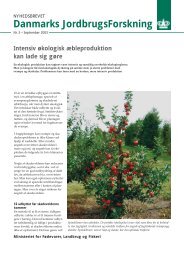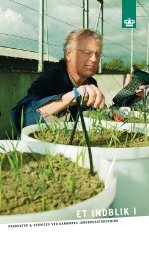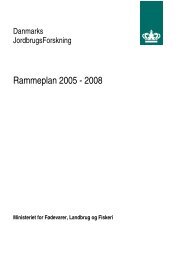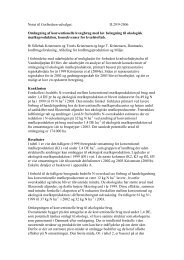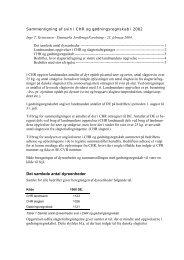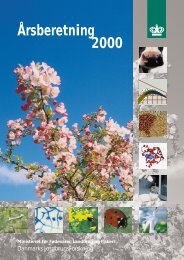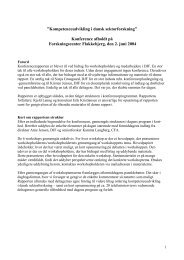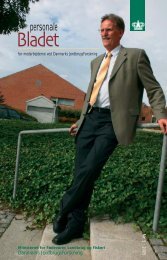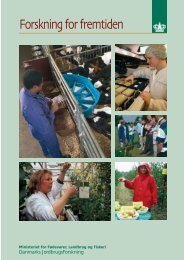Reproduction performances and conditions of group-housed non ...
Reproduction performances and conditions of group-housed non ...
Reproduction performances and conditions of group-housed non ...
You also want an ePaper? Increase the reach of your titles
YUMPU automatically turns print PDFs into web optimized ePapers that Google loves.
- Paper I -<br />
Abstract<br />
The number <strong>of</strong> <strong>group</strong> <strong>housed</strong> <strong>non</strong>-lactating sows is increasing rapidly in Europe as a consequence<br />
<strong>of</strong> changed legislation initiated by elevated public concern <strong>of</strong> animal welfare. Lower<br />
litter size <strong>and</strong> pregnancy rate in <strong>group</strong> compared to individual <strong>housed</strong> <strong>non</strong>-lactating sows<br />
have been observed in several on-farm experiments. The aim <strong>of</strong> this review is to consider<br />
whether the variation in energy intake in a <strong>group</strong> <strong>of</strong> <strong>non</strong>-lactating sows can influence variation<br />
in litter size <strong>and</strong> pregnancy rate in practice. Through a review <strong>of</strong> existing literature with<br />
main emphasis on publications after 1980, the effect <strong>of</strong> energy supply before mating <strong>and</strong> in<br />
pregnancy on pregnancy rate <strong>and</strong> litter size is discussed. The results indicate that low compared<br />
to high energy intake before mating may impair litter size in gilts <strong>and</strong> in sows that<br />
experienced severe weight loss during lactation. Furthermore, it seems that moderate compared<br />
to low energy intake the first three days after mating may reduce litter size in the gilt<br />
but not in the sows. However, very low energy intake the first four weeks in pregnancy may<br />
impair litter size in gilts <strong>and</strong> sows <strong>and</strong> also pregnancy rate in gilts. Whether the last mentioned<br />
is also the case for sows is not possible to conclude. However, it seems that low energy<br />
intake for several successive parities can increase the risk <strong>of</strong> being culled as a consequence<br />
<strong>of</strong> not being pregnant. Based upon studies indicating that low ranking sows may<br />
consume considerably less than high ranking sows (e.g. 50-80%) in <strong>group</strong> <strong>housed</strong> systems,<br />
it is suggested that variation in feed intake in a <strong>group</strong> <strong>of</strong> restricted fed pregnant female pigs<br />
may be large enough to influence pregnancy rate <strong>and</strong> litter size.<br />
Keywords: Sow, Gilt, Group housing, Energy intake, <strong>Reproduction</strong>, Litter size, Pregnancy<br />
rate<br />
22




